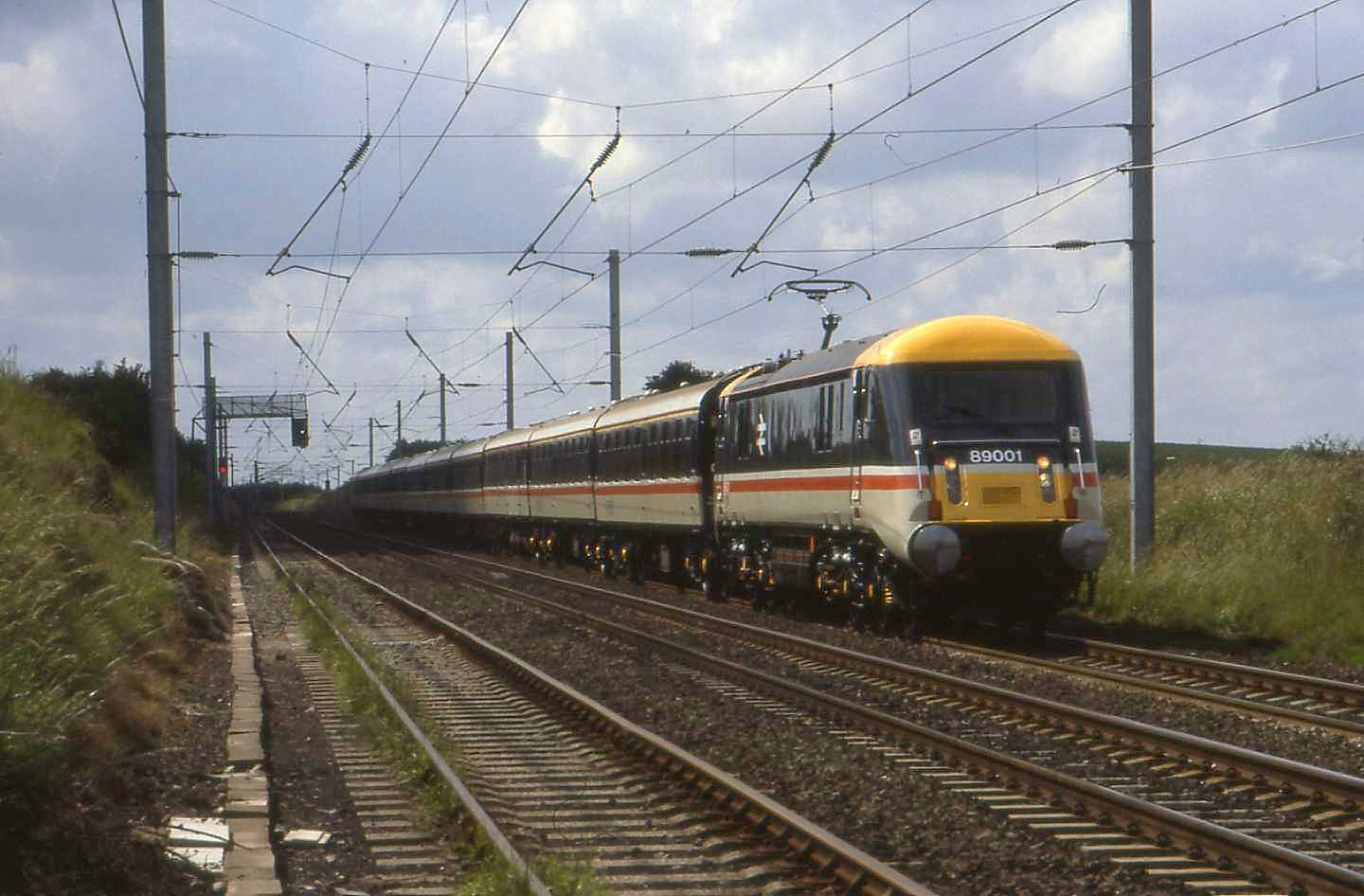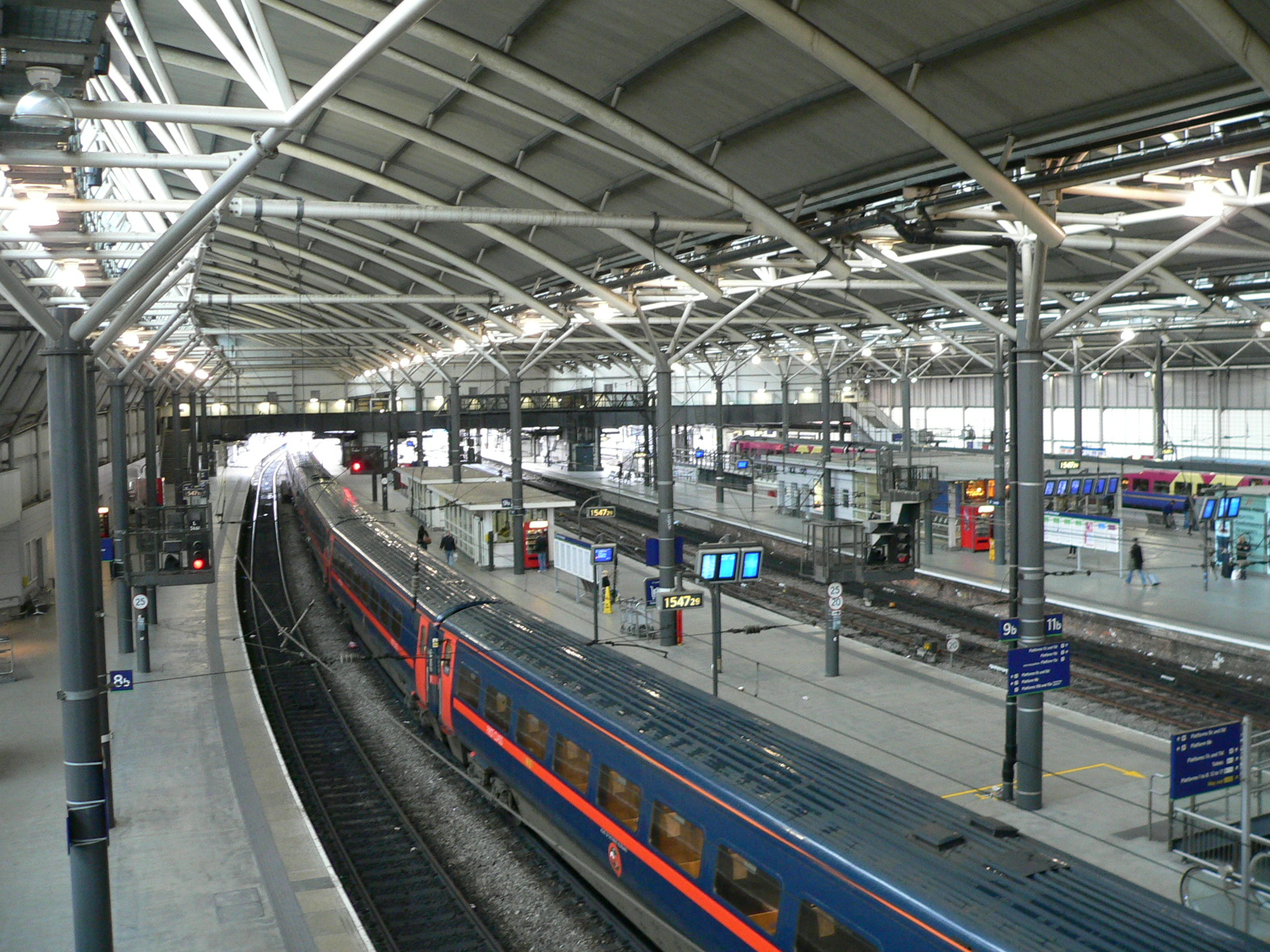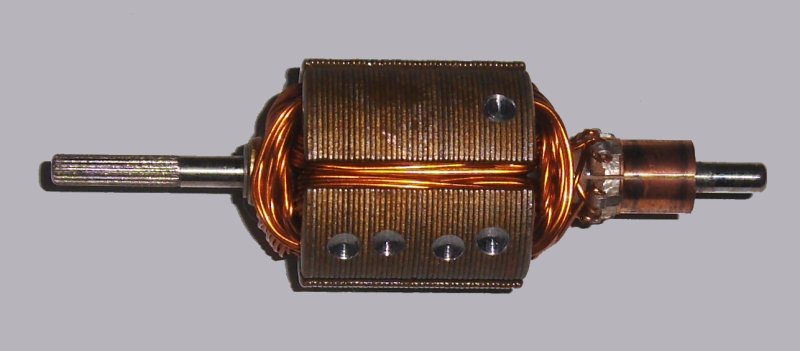|
British Rail Class 89
The British Rail Class 89 is a prototype electric locomotive. Only one was built, in 1986, by British Rail Engineering Limited's Crewe Works. It was used on test-trains on both the West Coast and East Coast Main Lines. The locomotive was fitted with advanced power control systems and developed more than 6,000 bhp (4,500 kW). After being withdrawn in 1992, it was returned to service in 1996, before being again withdrawn in 2000. As of January 2021, it is in the final stages of an overhaul that will return it to the main line. Design The Class 89 locomotive was designed by Brush Traction, Loughborough to meet a specification issued by British Rail. BR subsequently changed the requirements of this specification, but not before Brush had committed to building the prototype locomotive. The locomotive has six DC traction motors. The main armature current for all the motors is fed from a common thyristor drive, with each motor having an independent field current controller. The fi ... [...More Info...] [...Related Items...] OR: [Wikipedia] [Google] [Baidu] |
Great North Eastern Railway
Great North Eastern Railway, often referred to as GNER, was a train operating company in the United Kingdom, owned by Sea Containers, that operated the InterCity East Coast franchise on the East Coast Main Line between London, Yorkshire, North East England and Scotland from April 1996 until December 2007. During March 1996, Sea Containers was awarded the franchise to operate the East Coast services; it begin operations on 28 April 1996. Initially receiving a favourable reception, the company brought in several service alterations and innovations, including the leasing of Class 373 ''Regional Eurostars'' along with the refurbishment of the InterCity 225 fleet. However, GNER's reputation and passenger numbers were both hit by a pair of derailments during the early 2000s, the Hatfield rail crash and the Great Heck rail crash. Plans to procure a fleet of tilting trains based on the Pendolino were mooted by the company, but were discarded amid a protracted and complex refranchisin ... [...More Info...] [...Related Items...] OR: [Wikipedia] [Google] [Baidu] |
West Coast Main Line
The West Coast Main Line (WCML) is one of the most important railway corridors in the United Kingdom, connecting the major cities of London and Glasgow with branches to Birmingham, Liverpool, Manchester and Edinburgh. It is one of the busiest mixed-traffic railway routes in Europe, carrying a mixture of intercity rail, regional rail, commuter rail and rail freight traffic. The core route of the WCML runs from London to Glasgow for and was opened from 1837 to 1869. With additional lines deviating to Northampton, Birmingham, Manchester, Liverpool and Edinburgh, this totals a route mileage of . The Glasgow–Edinburgh via Carstairs line connects the WCML to Edinburgh, however the main London–Edinburgh route is the East Coast Main Line. Several sections of the WCML form part of the suburban railway systems in London, Coventry, Birmingham, Liverpool, Manchester and Glasgow, with many more smaller commuter stations, as well as providing links to more rural towns. It is one of the ... [...More Info...] [...Related Items...] OR: [Wikipedia] [Google] [Baidu] |
Field Winding
A field coil is an electromagnet used to generate a magnetic field in an electro-magnetic machine, typically a rotating electrical machine such as a motor or generator. It consists of a coil of wire through which a current flows. In a rotating machine, the field coils are wound on an iron magnetic core which guides the magnetic field lines. The magnetic core is in two parts; a stator which is stationary, and a rotor, which rotates within it. The magnetic field lines pass in a continuous loop or magnetic circuit from the stator through the rotor and back through the stator again. The field coils may be on the stator or on the rotor. The magnetic path is characterized by ''poles'', locations at equal angles around the rotor at which the magnetic field lines pass from stator to rotor or vice versa. The stator (and rotor) are classified by the number of poles they have. Most arrangements use one field coil per pole. Some older or simpler arrangements use a single field coil w ... [...More Info...] [...Related Items...] OR: [Wikipedia] [Google] [Baidu] |
Thyristor
A thyristor () is a solid-state semiconductor device with four layers of alternating P- and N-type materials used for high-power applications. It acts exclusively as a bistable switch (or a latch), conducting when the gate receives a current trigger, and continuing to conduct until the voltage across the device is reversed biased, or until the voltage is removed (by some other means). There are two designs, differing in what triggers the conducting state. In a three-lead thyristor, a small current on its Gate lead controls the larger current of the Anode to Cathode path. In a two-lead thyristor, conduction begins when the potential difference between the Anode and Cathode themselves is sufficiently large (breakdown voltage). Some sources define silicon-controlled rectifier (SCR) and thyristor as synonymous. Other sources define thyristors as more complex devices that incorporate at least four layers of alternating N-type and P-type substrate. The first thyristor devices were ... [...More Info...] [...Related Items...] OR: [Wikipedia] [Google] [Baidu] |
Armature (electrical Engineering)
In electrical engineering, the armature is the winding (or set of windings) of an electric machine which carries alternating current. The armature windings conduct AC even on DC machines, due to the commutator action (which periodically reverses current direction) or due to electronic commutation, as in brushless DC motors. The armature can be on either the rotor (rotating part) or the stator (stationary part), depending on the type of electric machine. The armature windings interact with the magnetic field ( magnetic flux) in the air-gap; the magnetic field is generated either by permanent magnets, or electromagnets formed by a conducting coil. The armature must carry current, so it is always a conductor or a conductive coil, oriented normal to both the field and to the direction of motion, torque (rotating machine), or force (linear machine). The armature's role is twofold. The first is to carry current across the field, thus creating shaft torque in a rotating machine or ... [...More Info...] [...Related Items...] OR: [Wikipedia] [Google] [Baidu] |
Traction Motor
A traction motor is an electric motor used for propulsion of a vehicle, such as locomotives, electric vehicle, electric or hydrogen vehicles, elevators or electric multiple unit. Traction motors are used in electrically powered rail vehicles (electric multiple units) and other electric vehicles including electric milk floats, elevators, roller coasters, conveyors, and trolleybuses, as well as vehicles with electrical transmission systems (Diesel locomotive#Transmission types, diesel-electric locomotives, electric hybrid vehicles), and battery electric vehicles. Motor types and control DC motor, Direct-current motors with series Field coil, field windings are the oldest type of traction motors. These provide a speed-torque characteristic useful for propulsion, providing high torque at lower speeds for acceleration of the vehicle, and declining torque as speed increases. By arranging the field winding with multiple taps, the speed characteristic can be varied, allowing relatively ... [...More Info...] [...Related Items...] OR: [Wikipedia] [Google] [Baidu] |
Direct Current
Direct current (DC) is one-directional flow of electric charge. An electrochemical cell is a prime example of DC power. Direct current may flow through a conductor such as a wire, but can also flow through semiconductors, insulators, or even through a vacuum as in electron or ion beams. The electric current flows in a constant direction, distinguishing it from alternating current (AC). A term formerly used for this type of current was galvanic current. The abbreviations ''AC'' and ''DC'' are often used to mean simply ''alternating'' and ''direct'', as when they modify ''current'' or ''voltage''. Direct current may be converted from an alternating current supply by use of a rectifier, which contains electronic elements (usually) or electromechanical elements (historically) that allow current to flow only in one direction. Direct current may be converted into alternating current via an inverter. Direct current has many uses, from the charging of batteries to large power sup ... [...More Info...] [...Related Items...] OR: [Wikipedia] [Google] [Baidu] |
British Rail
British Railways (BR), which from 1965 traded as British Rail, was a state-owned company that operated most of the overground rail transport in Great Britain from 1948 to 1997. It was formed from the nationalisation of the Big Four British railway companies, and was privatised in stages between 1994 and 1997. Originally a trading brand of the Railway Executive of the British Transport Commission, it became an independent statutory corporation in January 1963, when it was formally renamed the British Railways Board. The period of nationalisation saw sweeping changes in the railway. A process of dieselisation and electrification took place, and by 1968 steam locomotives had been entirely replaced by diesel and electric traction, except for the Vale of Rheidol Railway (a narrow-gauge tourist line). Passengers replaced freight as the main source of business, and one-third of the network was closed by the Beeching cuts of the 1960s in an effort to reduce rail subsidies. On privatis ... [...More Info...] [...Related Items...] OR: [Wikipedia] [Google] [Baidu] |
Loughborough
Loughborough ( ) is a market town in the Charnwood borough of Leicestershire, England, the seat of Charnwood Borough Council and Loughborough University. At the 2011 census the town's built-up area had a population of 59,932 , the second largest in the county after Leicester. It is close to the Nottinghamshire border and short distances from Leicester, Nottingham, East Midlands Airport and Derby. It has the world's largest bell foundry, John Taylor Bellfounders, which made bells for the Carillon War Memorial, a landmark in the Queens Park in the town, of Great Paul for St Paul's Cathedral, and for York Minster. History Medieval The earliest reference to Loughborough occurs in the Domesday Book of 1086, which calls it ''Lucteburne''. It appears as ''Lucteburga'' in a charter from the reign of Henry II, and as ''Luchteburc'' in the Pipe Rolls of 1186. The name is of Old English origin and means "Luhhede's ''burh'' or fortified place". Industrialisation The first sign of in ... [...More Info...] [...Related Items...] OR: [Wikipedia] [Google] [Baidu] |
Watt
The watt (symbol: W) is the unit of power or radiant flux in the International System of Units (SI), equal to 1 joule per second or 1 kg⋅m2⋅s−3. It is used to quantify the rate of energy transfer. The watt is named after James Watt (1736–1819), an 18th-century Scottish inventor, mechanical engineer, and chemist who improved the Newcomen engine with his own steam engine in 1776. Watt's invention was fundamental for the Industrial Revolution. Overview When an object's velocity is held constant at one metre per second against a constant opposing force of one newton, the rate at which work is done is one watt. : \mathrm In terms of electromagnetism, one watt is the rate at which electrical work is performed when a current of one ampere (A) flows across an electrical potential difference of one volt (V), meaning the watt is equivalent to the volt-ampere (the latter unit, however, is used for a different quantity from the real power of an electrical circuit). : ... [...More Info...] [...Related Items...] OR: [Wikipedia] [Google] [Baidu] |
Horsepower
Horsepower (hp) is a unit of measurement of power, or the rate at which work is done, usually in reference to the output of engines or motors. There are many different standards and types of horsepower. Two common definitions used today are the mechanical horsepower (or imperial horsepower), which is about 745.7 watts, and the metric horsepower, which is approximately 735.5 watts. The term was adopted in the late 18th century by Scottish engineer James Watt to compare the output of steam engines with the power of draft horses. It was later expanded to include the output power of other types of piston engines, as well as turbines, electric motors and other machinery. The definition of the unit varied among geographical regions. Most countries now use the SI unit watt for measurement of power. With the implementation of the EU Directive 80/181/EEC on 1 January 2010, the use of horsepower in the EU is permitted only as a supplementary unit. History The development of the stea ... [...More Info...] [...Related Items...] OR: [Wikipedia] [Google] [Baidu] |
Electric Locomotive
An electric locomotive is a locomotive powered by electricity from overhead lines, a third rail or on-board energy storage such as a battery or a supercapacitor. Locomotives with on-board fuelled prime movers, such as diesel engines or gas turbines, are classed as diesel-electric or gas turbine-electric and not as electric locomotives, because the electric generator/motor combination serves only as a power transmission system. Electric locomotives benefit from the high efficiency of electric motors, often above 90% (not including the inefficiency of generating the electricity). Additional efficiency can be gained from regenerative braking, which allows kinetic energy to be recovered during braking to put power back on the line. Newer electric locomotives use AC motor-inverter drive systems that provide for regenerative braking. Electric locomotives are quiet compared to diesel locomotives since there is no engine and exhaust noise and less mechanical noise. The lack of re ... [...More Info...] [...Related Items...] OR: [Wikipedia] [Google] [Baidu] |





.jpg)


